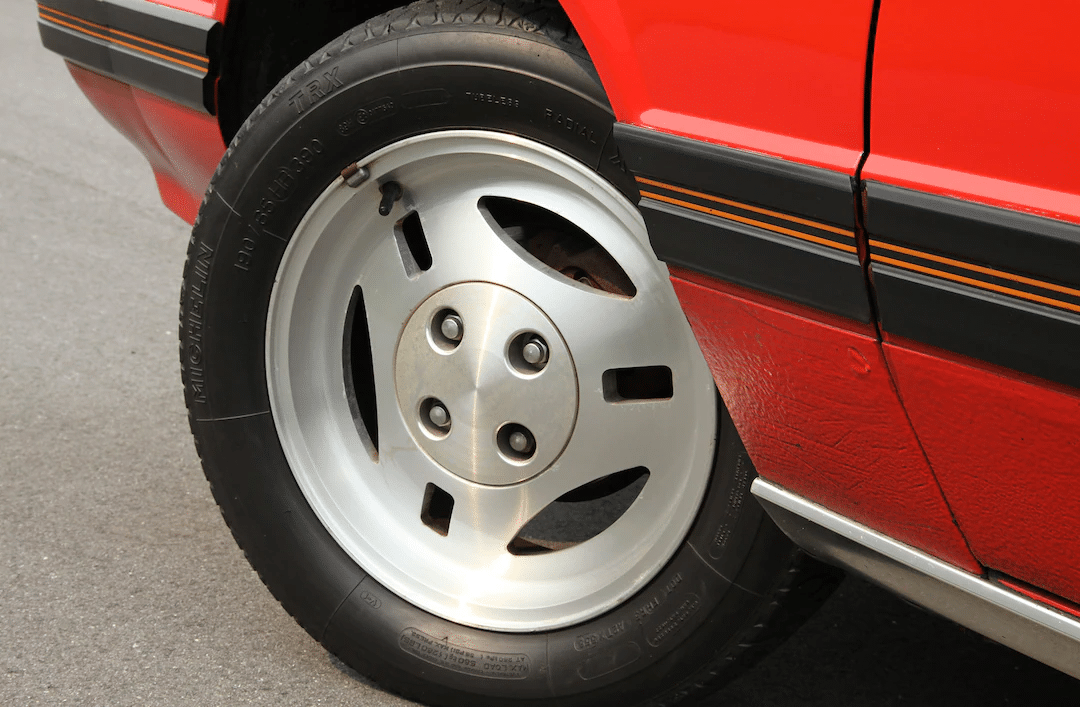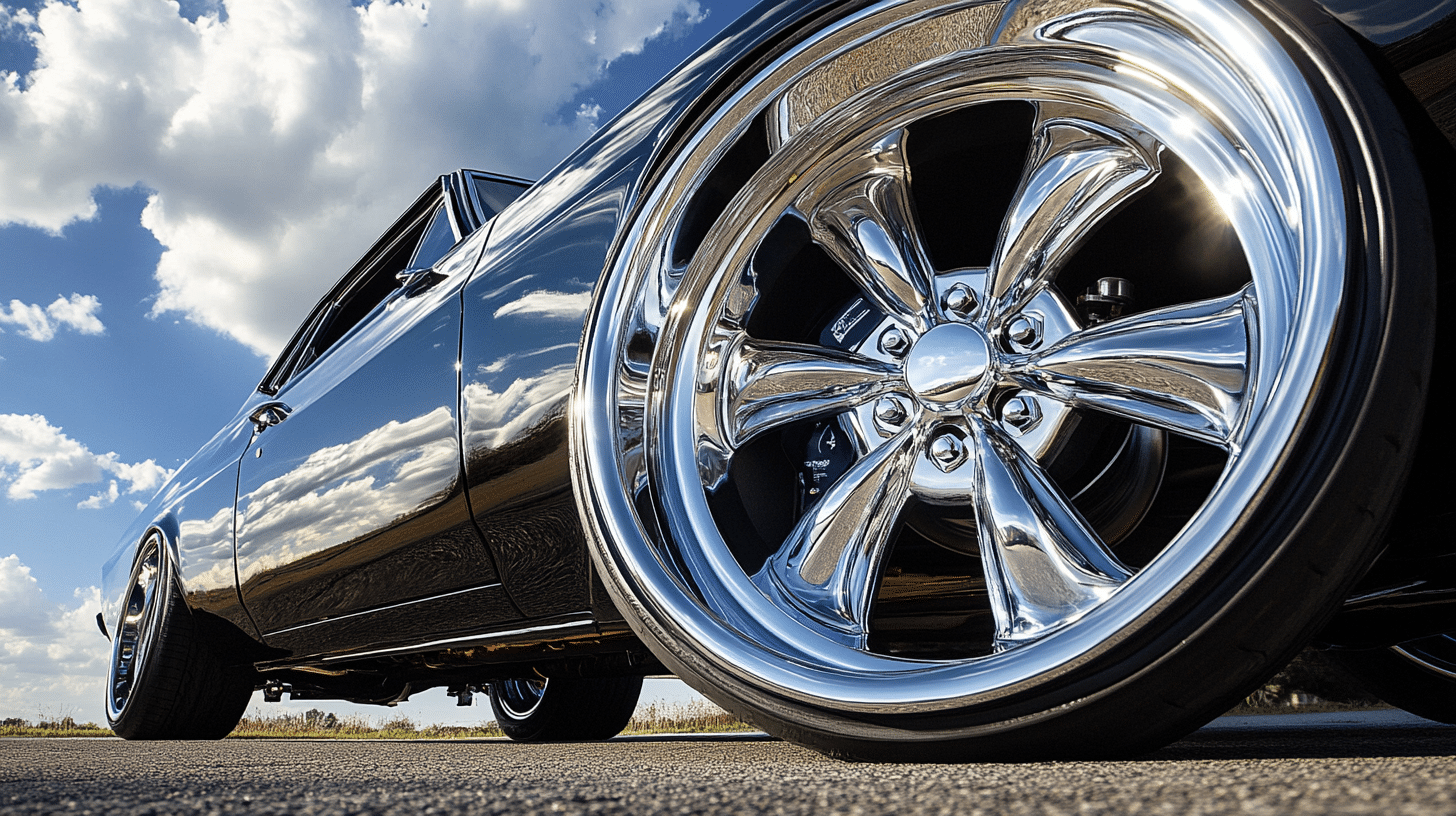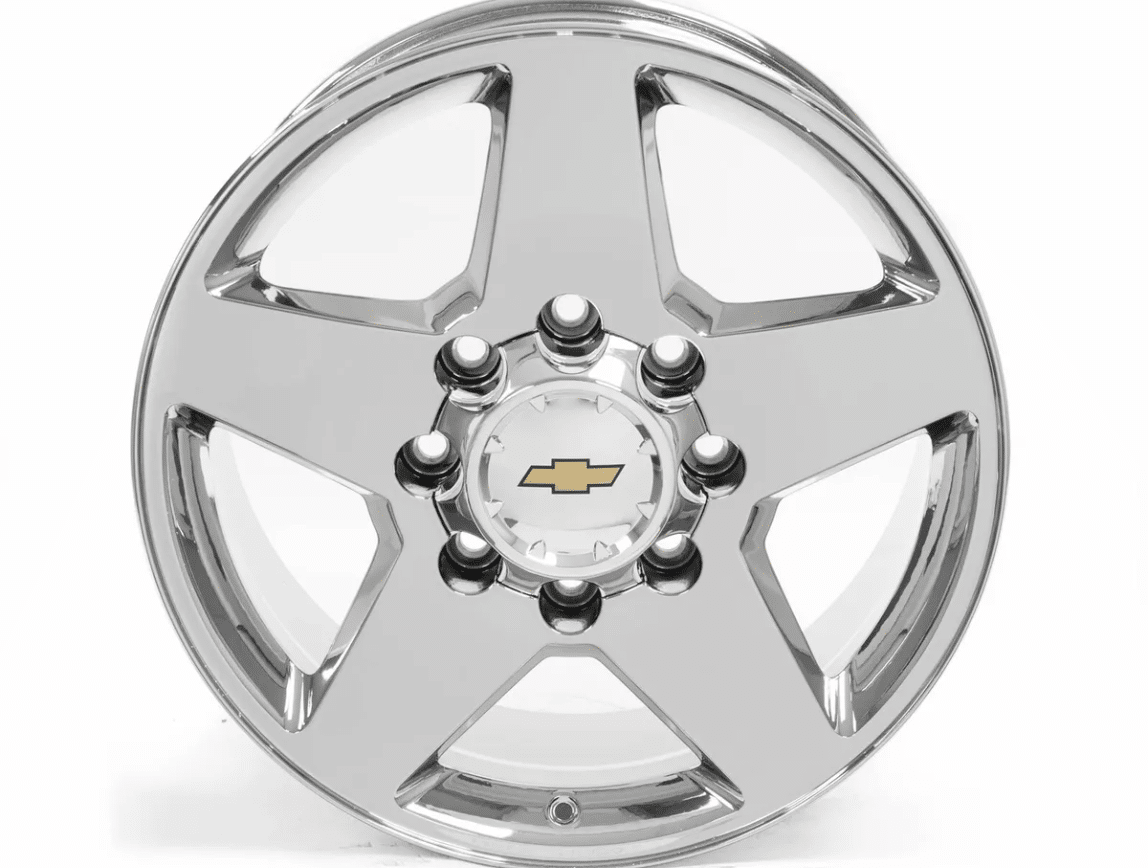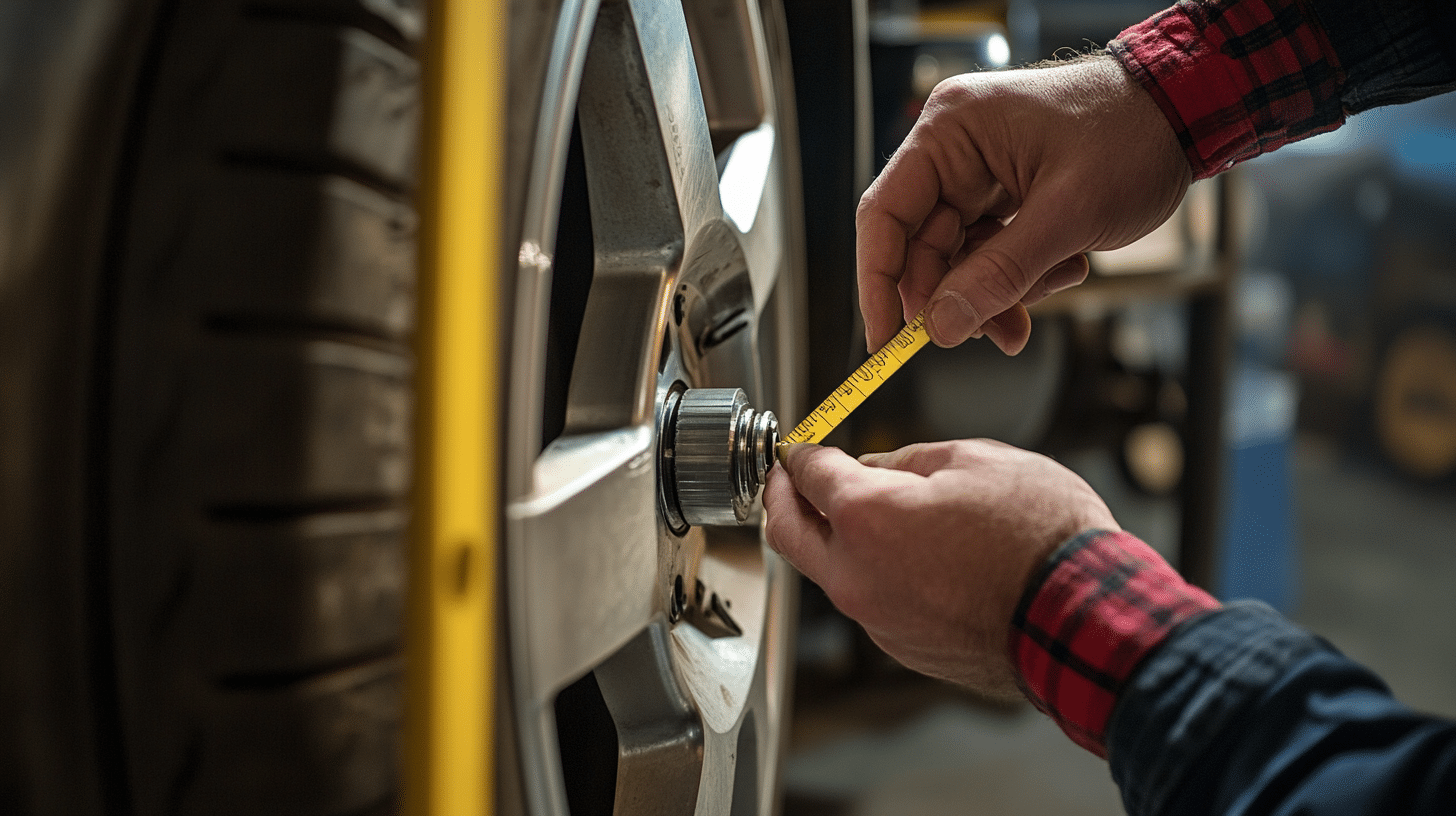Many Chevy owners find themselves puzzled when it comes to understanding their vehicle’s bolt pattern.
Whether you’re looking to upgrade your wheels or simply want to know more about your car, adopting this concept is key.
Bolt patterns play a crucial role in ensuring your wheels fit correctly and safely on your vehicle.
In this guide, we’ll break down the essentials of Chevy bolt patterns, with a focus on the 5-lug configuration. You’ll learn how to identify, measure, and understand your Chevy’s bolt pattern.
We’ll cover different Chevy models, their typical patterns, and why this information matters for wheel selection and vehicle performance.
What are the Different Chevy Bolt Patterns?
Chevy vehicles come with a range of bolt patterns to suit different vehicle types and purposes.
Let’s look at the main patterns you’ll find across the Chevy lineup:
1. 4-Lug Bolt Pattern

This pattern is mainly used in smaller Chevy cars. It’s designed for vehicles with less weight and smaller wheel sizes.
- Examples: You’ll find this pattern on models like the Chevy Spark and older models such as the Chevy Chevette.
- Why It’s Used: The 4-lug pattern works well for compact cars, providing enough stability without adding unnecessary weight.
2. 5-Lug Bolt Pattern

The 5-lug pattern is the most common across Chevy’s range and is used in various vehicles, from cars to SUVs and light trucks.
- Examples: You’ll see this pattern on popular models like the Chevy Malibu and Chevy Camaro.
- Why It’s Used: This pattern offers a good mix of strength and flexibility. It can handle larger wheels while still being used across many different types of vehicles.
3. 6-Lug Bolt Pattern

Chevy uses the 6-lug pattern for their trucks and larger SUVs. It provides extra strength for heavier vehicles.
- Examples: Look for this pattern on models like the Chevy Silverado and Chevy Tahoe.
- Why It’s Used: The 6-lug pattern is great for vehicles that carry heavy loads or go off-road. It keeps wheels secure even in tough conditions.
4. 8-Lug Bolt Pattern

The 8-lug pattern is reserved for Chevy’s heaviest vehicles, like full-size trucks and large SUVs.
- Examples: You’ll find this pattern on heavy-duty models like the Chevy Silverado HD and Chevy Suburban.
- Why It’s Used: When you need to tow or haul very heavy loads, the 8-lug pattern provides the strength and durability required.
Each of these patterns serves a specific purpose in Chevy’s vehicle lineup, ensuring that every vehicle has the right wheel attachment for its size, weight, and intended use.
How to Measure Bolt Patterns

Measuring your Chevy’s bolt pattern is an important skill when you’re looking to change or upgrade your wheels.
Here’s a general approach that works for most bolt patterns:
- Step 1: Count the number of lug holes on your wheel. Chevy vehicles typically have 4, 5, 6, or 8 lugs.
- Step 2: Clean the wheel to ensure accurate measurements. You’ll need a ruler, caliper, or, ideally, a bolt pattern gauge.
- Step 3: Measure the Pattern. For even-numbered patterns (4, 6, 8 lugs), Measure from the center of one lug hole to the center of the hole directly across from it.For odd-numbered patterns (5 lugs), Measure from the center of any lug hole to the outer edge of the lug hole farthest from it (not directly across).
- Step 4: Note down both the number of lugs and the measurements you took. For example, if you counted 5 lugs and measured 114.3mm, your bolt pattern would be 5×114.3.
Tips for Accurate Measurement:
- For the most precise results, use a bolt pattern gauge.
- If using a ruler, measure in millimeters for better accuracy.
- When in doubt, take multiple measurements and average them.
- Remember, even a small difference can affect wheel fitment, so accuracy is key.
By following these steps, you can determine the bolt pattern for most Chevy vehicles.
However, if you’re unsure or dealing with a rare model, it’s always best to consult a professional or refer to your vehicle’s manual for the most accurate information.
How to Choose the Right Bolt Pattern for Your Chevy

1. Vehicle Type
- Sedans and Compact Cars: Typically use 4-lug or 5-lug patterns. These patterns are suitable for everyday driving, balancing efficiency and handling.
- SUVs and Light Trucks: Often use 5-lug or 6-lug patterns. These provide more strength for heavier vehicles and light off-road use.
- Heavy-Duty Trucks and Full-Size SUVs: Use 6-lug or 8-lug patterns. These robust patterns handle heavy loads, towing, and intense off-road conditions.
2. Wheel Size
The bolt pattern must match your desired wheel size. Larger wheels may require different patterns for proper fit and performance.
Correct bolt patterns ensure proper wheel alignment, stability, and clearance with vehicle components like brakes and suspension.
3. Performance Needs
- Daily Driving: Focus on matching the original bolt pattern to maintain designed performance and safety.
- High-Performance: This may require specific patterns to accommodate specialized wheels for improved handling and speed.
- Off-Road and Towing: Need stronger bolt patterns to handle stress from rough terrain or heavy loads.
Remember, always match new wheels to your Chevy’s existing bolt pattern for safety and optimal performance.
When in doubt, consult your vehicle’s manual or a professional to ensure the right choice for your specific model and intended use.
Key Considerations When Choosing Wheels for Your Chevy
- Offset and Its Impact: Wheel offset is the distance from the hub mounting surface to the wheel’s centerline. It affects handling and appearance. Positive offset improves stability in front-wheel-drive Chevys, while negative offset can enhance grip in rear-wheel-drive models.
- Center Bore and Hub Fitment: The center bore is the hole in the middle of the wheel that fits over your Chevy’s hub. It’s vital for proper wheel fit and safety. Many aftermarket wheels have a larger center bore and use hub rings to ensure a snug fit. Getting this right prevents vibration and ensures even weight distribution.
- Dual Bolt Patterns: Some wheels have two bolt-hole sets to fit different patterns, allowing one wheel to fit multiple Chevy models. While versatile, these wheels might need more upkeep and could be less sturdy than single-pattern wheels. Consider dual patterns if you have multiple vehicles or want future options.
When selecting wheels for your Chevy, balance these factors to ensure both style and functionality. The right combination will enhance your vehicle’s look while maintaining its performance and safety.
Conclusion
Understanding your Chevy’s bolt pattern is more than just a technical detail—it’s key to maintaining your vehicle’s performance, safety, and style.
Whether you’re driving a compact Spark or a robust Silverado, the right bolt pattern ensures your wheels fit perfectly and perform optimally.
Remember, when upgrading or replacing wheels, always consider your vehicle type, desired wheel size, and performance needs.
The correct bolt pattern not only keeps you safe on the road but also opens up a world of customization options for your Chevy.
Ready to explore wheel options for your vehicle? Start by checking your current bolt pattern and consult with a professional to find the perfect match.
Frequently Asked Questions
What is the Most Common Bolt Pattern for A Chevy?
The most common Chevy bolt pattern is 6×5.5-inch. It’s widely used on many Chevy trucks and SUVs, especially the Silverado 1500 4×4 models since the 1960s.
Are All 6 Lug Chevy Wheels the Same Bolt Pattern?
No, not all 6-lug Chevy wheels have the same bolt pattern. While many Chevy vehicles use the 6×5.5-inch pattern, some models may have different measurements. It’s important to check your specific vehicle’s pattern.
What Bolt Pattern is a Chevy Colorado?
The Chevy Colorado’s bolt pattern depends on its generation. Recent models use a 6×120 bolt pattern, while earlier versions had a 6×139.7 pattern.


